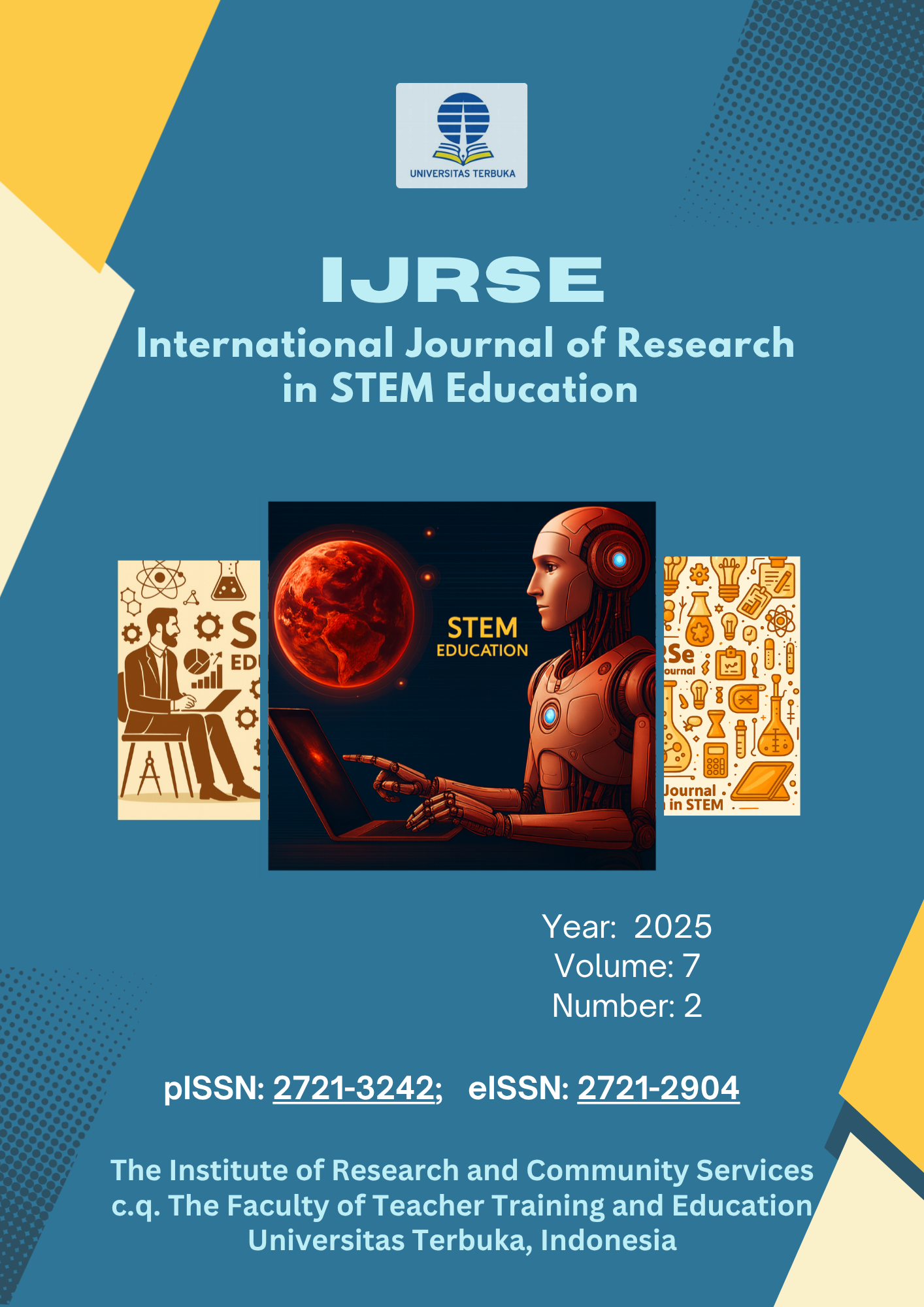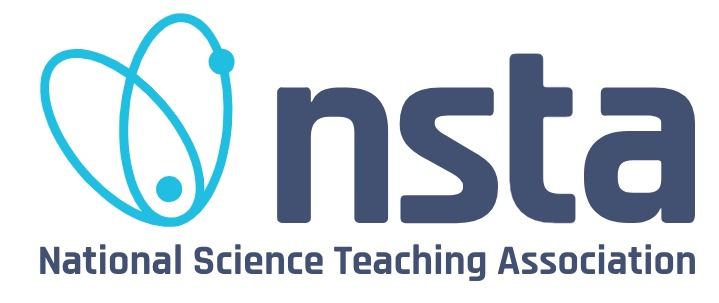Team-Based Project Design for Environmental Chemistry and Entrepreneurship Learning
DOI:
https://doi.org/10.33830/ijrse.v7i2.1811Keywords:
Design, entrepreneurship, environmental chemistry, integrating, motivation, team-based projectAbstract
The aims of this study are to develop a learning design an integrated learning Environmental Chemistry-Entrepreneurial Education (EC-EE) and to investigate its impact on students’ motivation in learning Environmental Chemistry. The development procedure adopted ADDIE model with five phases. The products including learning design and learning tools were validated by three experts before performing simulation and trials in a small group teaching. The field trial was carried out using a pre-experimental method using one group pretest and posttest design involving 30 students of chemistry education study program Faculty of Teacher Training and Education. The techniques of data collection used were mixed methods by combining qualitattive and quantitative research. The results of data analysis where t count (22.396) > t table (2.045) and probability value (0.000) < 0.05 can be interpreted that H0 is rejected and H1 is accepted. The results of the N-Gain percentage is 81.6% which means that the interpretation category has a high effectiveness value. It can be concluded that the implementation of integrated EC-EE design with applying TBP model in the material of waste management, processing and utilization has an effect on students' motivation in learning environmental chemistry. The implementation of the integrated EC-EE learning design was very enjoyable, meaningfull and usefull for the students. Its reasonable because with integrating entrepreneurship into environmental chemistry courses, they can apply their knowledge in solving real problems in local community, build collaboration with many people, as well as they can train their creativity to produce innovative entrepreneurial products.
References
Asyhar, R. dan Effendi, M. H., (2022). Desain instruksional kimia lingkungan berbasis entrepreneurship dengan penerapan metode case-method (CM) dan team-based project (TBP) [Unpublished research report]. LPPM Universitas Jambi.
Bell, S., (2010). Project-Based Learning for the 21st Century: Skills for the Future. The Clearing House: Journal of Educational Strategies, Issues and Ideas, 83(2), 39–43. https://doi.org/10.1080/00098650903505415
Evenddy, S. S., Gailea, N., Syafriza, (2023), Exploring the Benefits and Challenges of Project-Based Learning in Higher Education, PPSDP International Journal of Education, 2(2), 458-469. https://doi.org/10.59175/pijed.v4i1.401.
Deria, A., Fadilah, M., Nisa, I. K., Fortuna, A., Fajriansyah, B., Salsabila, P., Mardiansyah, R., Alika, F. A., Lismita, Junita, U., (2023), Effect of Project Based Learning (PJBL) Learning Model on Creative Thinking Ability of High School Biology Students: A Literature Review, Pakar Pendidikan, 21(1), 58-64. https://doi.org/10.24036/pakar.v21i1.288
Fadhil, M., Kasli, E., Halim, A., Evendi, Mursal, Yusrizal, (2021), Impact of Project Based Learning on Creative Thinking Skills and Student Learning Outcomes, Journal of Physics: Conference Series 1940: 1-8. https://doi.org/10.1088/1742-6596/1015/2/022004
Guttman, L., (1944), A basis for Scaling Qualitative Data, American Sociological Review, 9, 139–150.
Harapan, U. P., & Sudibjo, N., (2021), Faktor-Faktor Yang Mempengaruhi Motivasi Belajar Siswa di Era Pandemi Covid-19, Akademika, 10(1), 145-153. https://doi.org/10.34005/akademika.v10i01
Holden, J. T. (2015). An introduction to the ADDIE instructional systems design model. FGDLA (1-17). https://sl.ut.ac.id/hSObSV9Cuy
Khaffah, F., Suprapto, K. W., Nuryadin, E., (2023), The effect of project-based learning model on students’ critical and creative thinking skills in the ecosystem concept, Jurnal Pendidikan Biologi Indonesia, 9 (3), 244-255. https://doi.org/10.22219/jpbi.v9i3.27461
Kumar, R., Kaur, S., Erceg, Ž., & Mirovic, I., (2023), Industry 4.0 and its impact on entrepreneurial ecosystems: An examination of trends and key implications, J. Organ. Technol. Entrep., 1(1), 12-34. https://doi.org/10.56578/jote010102
Manallack, S., (2012), Soft Skills for a Flat World, McGraw-Hill India. https://sl.ut.ac.id/7TNpVT8OHQ
Molenda, M. (2003). In search of the elusive ADDIE model. Performance improvement, 42(5), 34-37. https://doi.org/10.1002/pfi.4930420508
Muzaffar, K., Sajad Ahmad Sof, S. A., Mir, S.A. (Editors), (2023), Handbook of Fruit Wastes and By-Products, Chemistry, Processing Technology, and Utilization, CRC Press, Taylor and Francis Group LLC, NewYork. Retrieved from https://api.pageplace.de/preview/DT0400.9781000688788_A43276746/preview-9781000688788_A43276746.pdf
Muharromah, T .R., (2019), Efektivitas Pembelajaran Berbasis Proyek Daur Ulang Minyak Jelantah dalam Meningkatkan Keterampilan Berpikir Kreatif Mahasiswa, Jurnal Pendidikan dan Pembelajaran Kimia, 8(2). https://digilib.unila.ac.id/id/eprint/58244
Nhleko, Y., & van der Westhuizen, T., (2022), The role of higher education institutions in introducing entrepreneurship education to meet the demands of industry 4.0, Academy of Entrepreneurship Journal, 28(1), 1-23. DOI: https://www.abacademies.org/journals/academy-of-entrepreneurship-journal.
Nurfuadi, N., (2023), Applying project-based learning to reinforce students’ character, Journal of Social Science Research, 3 (2), 8575-8585. https://doi.org/j-innovative.org/index.php/
Nurhayani, U., Azis, A. C. K., Nasution, A. H., Herlian, R., Purba,E. L., (2019). An Introductory of Product Innovation and Marketing Strategy into Shell Waste-Based Souvenir Crafts Industry in The City of Tanjung Balai, Journal of Community Research and Service, 2(2), 226-230. https://doi.org/10.24114/jcrs.v2i2.13154.
Paolucci, E., Sansone, G., Fiore, E., (2019), Entrepreneurship Education in a Multidisciplinary Environment: Evidence from an Entrepreneurship Programme Held in Turin. Administrative Sciences. 9 (1): 28. https://doi.org/10.3390/admsci9010028
Saputra, Y. A., Novilia, F., Hendrayati, H., (2023), Entrepreneurship Curriculum in Higher Education: A Systematic Literature Review (SLR), West Science Interdisciplinary Studies, 1(12)pp. 1519-1531 https://wsj.westscience-press.com/index.php/wsis
Sari, A. M., Rakimahwati, Suryana, D.Jamna, J., Jasrial, (2024), Effectiveness of Seven Steps of Project-Based Learning (PjBL) in Kindergarten, Educational Administration: Theory and Practice, 30(4), 2211-2220. https://doi.org/10.53555/kuey.v30i3.4364
Spatioti, A. G., Kazanidis, I, and Pange, J. (2022). A Comparative Study of the ADDIE Instructional Design Model in Distance Education. Information, 13, 402. 1-22. https://doi.org/10.3390/info13090402.
Sugiyono, (2020). Metode Penelitian Kuantitatif, Kualitatif dan R&D. Bandung: Alfabeta. Retrieved from https://sl.ut.ac.id/s8TeUwJ3Qs
Szabo, D-A., (2022), Adapting the Addie Instructional Design Model in Online Education. Studia Psychologica, 1, 125-140. https://doi.org/10.24193/subbpsyped.2022.1.08
Stanley, T. J., (2010), The Millionaire Mind, e-Pub Rdition, Rosetta Books LLC., New York. retrieved from https://www.researchgate.net/publication/389593767_The_Millionaire_Mind
Sudarmin, Zuhro, L., Rr. Pujiastuti, S. E., Asyhar, R., Zaenuri, Rostia, A., (2019), the development of pbl-based worksheets integrated with green chemistry and ethnoscience to improve students’ thinking skills, Jurnal Pendidikan IPA Indonesia, 8 (4), pp. 16-23. https://doi.org/10.15294/jpii.v8i4.17546
Sudarmin, Rr. Pujiastuti, S. E., Asyhar, R., Prasetya, A. T., Diliarosta, S., Ariyatun, (2023), Chemistry project-based learning for secondary metabolite course with ethno-stem approach to improve students’ conservation and entrepreneurial character in the 21st century, Journal of Technology and Science Education, 13 (1), 393-409. https://doi.org/10.3926/jotse.1792
Tafakur, Ratnawati, H., Shukri, A. A. M., (2023), Effectiveness of project-based learning for enhancing students critical thinking skills: A meta-analysis, Jurnal Inovasi Pembelajaran, 9(2), 191-209. https://doi.org/10.22219/jinop.v9i2.22142
Zhou, C., (2023), The Impact of the Project-Based Learning Method on Students, BPC Educ. Psychology, 9, 20-25. https://doi.org/10.54691/j5wypd49

Downloads
Published
How to Cite
Issue
Section
License
Copyright (c) 2025 Rayandra Asyhar, Muhammad Haris Effendi-Hasibuan, Ika Kartikasari

This work is licensed under a Creative Commons Attribution-NonCommercial 4.0 International License.
Content Licensing, Copyright, and Permissions
1. License
International Journal of Research in STEM Education (IJRSE) adopts the Creative Commons Attribution-NonCommercial 4.0 International License (CC BY-NC 4.0) as the optimal license for the publication, distribution, use, and reuse of scholarly works for non-commercial purposes.
The non-commercial use of the article will be governed by this license, which allows others to share and adapt the work provided proper attribution is given to the author(s) and the journal.
Creative Commons Attribution-NonCommercial 4.0 International License.
Creative Commons License: CC BY-NC 4.0
2. Author's Warranties
The author warrants that the article is original, written by the stated author(s), has not been published before, contains no unlawful statements, does not infringe the rights of others, is subject to copyright vested exclusively in the author, is free of any third-party rights, and that all necessary written permissions to quote from other sources have been obtained by the author(s).
3. User Rights
The International Journal of Research in STEM Education aims to disseminate published articles as freely as possible. Under the Creative Commons license, users are permitted to copy, distribute, display, and perform the work for non-commercial purposes only, provided that proper attribution is given to the author(s) and this journal.
4. Rights of Authors
Authors retain the following rights:
- Copyright and proprietary rights related to the article, such as patent rights.
- The right to use the substance of the article in future works (e.g., lectures, books).
- The right to reproduce the article for personal purposes.
- The right to self-archive the article.
- The right to enter into separate, additional non-exclusive contractual arrangements for the distribution of the article’s published version (e.g., posting to an institutional repository or publishing it in a book), with acknowledgment of its initial publication in IJRSE.
If the author has a non-exclusive publishing contract with another publisher under a more restrictive license, the author still retains all rights to republish or distribute the work elsewhere, including commercially, as the author is not bound by the license conditions imposed on the journal.
5. Co-Authorship
If the article has multiple authors, the signatory of this agreement warrants that he/she has been authorized by all co-authors to sign this agreement on their behalf and agrees to inform all co-authors of the terms of this agreement.
6. Termination
This agreement may be terminated by either the author or IJRSE with two months’ notice if the other party has materially breached this agreement and failed to remedy such breach within one month after receiving written notice.
No breach or violation of this agreement will cause automatic termination or affect the license granted to IJRSE.
7. Royalties
This agreement entitles the author to no royalties or other fees. To the extent legally permissible, the author waives the right to collect royalties in respect of any use of the article by IJRSE or its sublicensees.
8. Miscellaneous
IJRSE will publish the article (or have it published) once the editorial process has been successfully completed.
The journal reserves the right to edit the article for style, punctuation, spelling, capitalization, referencing, and consistency as deemed appropriate.
The author acknowledges that the article will be made publicly accessible, and such access will be free of charge for readers.







